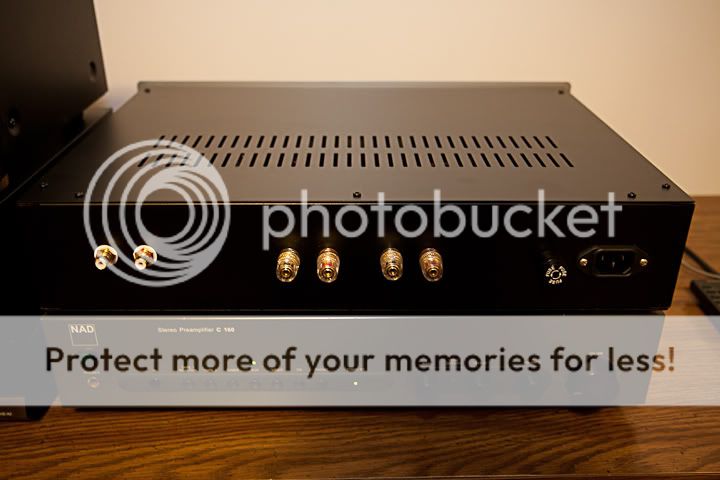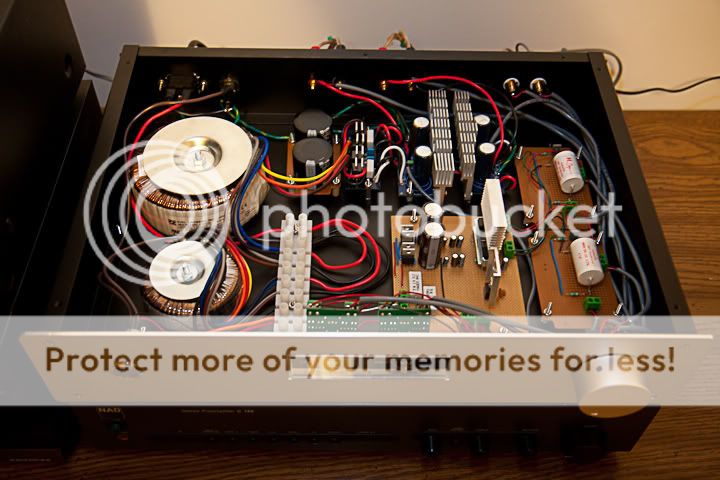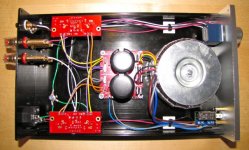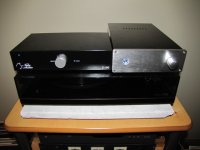Bleeder resistors are not intended to turn off amps quickly. You need different circuits for that. If you try to use bleeder resistors of a sufficiently low resistance to turn off the amp quickly, you are wasting an awful lot of power producing heat.
I have bleeder resistors in my amp, directly on the bulk caps, for the simple reason that my power supply is in a separate box from my amp (the power LED is in the amp box), and I don't want to have to worry about A) someone other than me turning on the power supply with the amp unplugged and leaving a voltage on the caps, and B) voltage regeneration on the caps with the amp unplugged due to no load.
With 35V rails and 15,000uF per rail, it would take my 2k2 bleeders 33 seconds to remove the voltage from the caps. I had 1k5 resistors there from when I was using 25V rails, and they got way too hot when I swapped transformers.
I have bleeder resistors in my amp, directly on the bulk caps, for the simple reason that my power supply is in a separate box from my amp (the power LED is in the amp box), and I don't want to have to worry about A) someone other than me turning on the power supply with the amp unplugged and leaving a voltage on the caps, and B) voltage regeneration on the caps with the amp unplugged due to no load.
With 35V rails and 15,000uF per rail, it would take my 2k2 bleeders 33 seconds to remove the voltage from the caps. I had 1k5 resistors there from when I was using 25V rails, and they got way too hot when I swapped transformers.
My second amplifier had 3*6800uF per supply rail.
It reproduced undistorted music for about 2minutes after unplugging from the mains. Then turned itself off silently.
Exactly! This amp will go for about 10-20 seconds playing music depending on the volume, after the mains is unplugged. It also turns off pretty much silently with only a small pop from the bass driver, causing no harm at all (apart from maybe tweeters in a bi amp system).
Why do I need a bleeder?
To bring the amplifier case to working temperature faster.
To bring the amplifier case to working temperature faster.
Adding a bleeder or two will increase the power dissipation.
This will lead to a higher internal operating temperature.
This may take the same time to reach quiescent condition or it may take longer.
It cannot be done in less time (=faster).
Yes, the temperatures may change faster (dT/dt), but the time will not be faster.
My second amplifier had 3*6800uF per supply rail.
It reproduced undistorted music for about 2minutes after unplugging from the mains. Then turned itself off silently.
Why do I need a bleeder?
I guess if his amp dosnt oscillate or distort as the caps discharge there is no need. I think bleeders are only useful as a safety precaution when working on the internals
Last edited:
Wow, this is nice. Impressive casework.
Where are the VU meters from, they look really shiny.
Thanks! I didn't actually make the case myself. I bought it and then had my front panel custom made after designing it on my computer.
I got the VU meters from ebay. It came with a green lamp but I modified it with by removing the lamp and putting in 3 blue LED's. Here's the link to the vu meter on ebay.
1 SD-318 Panel 2 VU Meter 500uA 680? 115x54mm 12V lamp - eBay (item 130338725839 end time Oct-15-10 06:33:47 PDT)
Thanks! I didn't actually make the case myself. I bought it and then had my front panel custom made after designing it on my computer.
I got the VU meters from ebay. It came with a green lamp but I modified it with by removing the lamp and putting in 3 blue LED's. Here's the link to the vu meter on ebay.
1 SD-318 Panel 2 VU Meter 500uA 680? 115x54mm 12V lamp - eBay (item 130338725839 end time Oct-15-10 06:33:47 PDT)
Hi JDawg are the driver circuits diy for the VU meters ?
Thanks
Koog
Hi JDawg are the driver circuits diy for the VU meters ?
Thanks
Koog
The vu drivers can be bought from JLM Audio. They have a vu buffer kit that you can get to drive the vu meters. There's also a schematic so if you want you could also make your own. Here's the link:
VU Buffer kit page
Thanks! I didn't actually make the case myself. I bought it and then had my front panel custom made after designing it on my computer.
Hi JDawg,
That's a very nice job.
Where did you purchase the case from?
How about the blue led power switch?
Hi JDawg,
That's a very nice job.
Where did you purchase the case from?
How about the blue led power switch?
Thanks, I think this turned out great for my first time building one. I wanted mine to look a little different from most of the others I've seen on here and I think I succeeded in that.
I ordered the case from an electronics store called RP Electronics.
Chassis Box - 2 Space, 3.5 x 12"
The power switch I got off ebay. Here's the link to the switch I got and its free shipping too.
eBay - New & used electronics, cars, apparel, collectibles, sporting goods & more at low prices
I love those switches but anyone using them be very sure to only use them on the AC side of things. If you put them on the DC side they will burn.
Why wouldn't them resist any DC current?
Regi,
look at the rating on the switch.
The DC rating, if shown, is different from the AC rating.
The AC current switches OFF twice in each cycle.
If the switch is opened while current is flowing then an arc is struck across the slightly open contacts. Once this arc is established the contacts can open to quite a big gap and the arc will not extinguish. With AC the arc will extinguish at the zero crossing point. With DC the switch gets hotter until it burns out.
That is why most DC ratings are set much lower than AC ratings.
look at the rating on the switch.
The DC rating, if shown, is different from the AC rating.
The AC current switches OFF twice in each cycle.
If the switch is opened while current is flowing then an arc is struck across the slightly open contacts. Once this arc is established the contacts can open to quite a big gap and the arc will not extinguish. With AC the arc will extinguish at the zero crossing point. With DC the switch gets hotter until it burns out.
That is why most DC ratings are set much lower than AC ratings.
OK, understood. So when Salas says "If you put them on the DC side they will burn" I should take that as "If you put through them more DC current than the rated DC value they will burn".
Will putting an small capacitor across the contacts affect this behaviour in any way? I have heard that X1 rated caps ares used to avoid arcing.
Thanks for your explanation, regards
Regi
Will putting an small capacitor across the contacts affect this behaviour in any way? I have heard that X1 rated caps ares used to avoid arcing.
Thanks for your explanation, regards
Regi
- Home
- Amplifiers
- Chip Amps
- Chip Amp Photo Gallery






